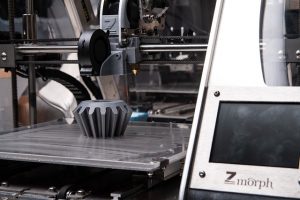
Additive manufacturing has become increasingly common in the manufacturing industry. Also known as 3D printing, it involves the addition of material to a substrate to build a three-dimensional object. With additive material, manufacturing companies can build custom-sized and custom-shaped objects from raw material. There are different types of additive manufacturing processes, however. Below are five of the most common additive manufacturing processes.
#1) Vat Photopolymerization
Vat photopolymerization is a common additive manufacturing process. It’s characterized by the use of light-sensitive resin as the material from which objects are constructed. With vat photopolymerization, an object is constructed out of light-sensitive resin, after which it’s exposed to light. Exposure to light causes the resin to cure, thus hardening and solidifying.
#2) Material Jetting
Many manufacturing companies use material jetting to build three-dimensional objects. Also known as inkjet printing, material jetting involves the use of a 3D printer to deposit droplets of material onto a substrate. It’s used to build three-dimensional objects layer by layer. After being deposited onto the substrate, the material is cured. Material jetting is considered one of the fastest, as well as most accurate, additive manufacturing processes available.
#3) Binder Jetting
In addition to material jetting, there’s binder jetting. Binder jetting is similar to material jetting. Both of these additive manufacturing processes use a 3D printer to deposit material onto a substrate. The main difference is that material jetting uses liquid material, whereas binder jetting uses powder material. The powder material is selectively deposited into specific layers of the substrate, thus building a three-dimensional object layer by layer.
#4) Powder Bed Fusion
Powder bed fusion has become an increasingly popular additive manufacturing process. Also known as selective laser melting (SLM), it lives up to its namesake by using a laser to melt the deposited material. Like with most additive manufacturing processes, powder bed fusion involves the use of a printer head to deposit material onto a substrate. It’s distinguished from other additive manufacturing processes, though, by its use of a laser. Powder bed fusion uses a laser to melt the deposited material, thereby hardening and solidifying it while subsequently building a three-dimensional object.
#5) Sheet Lamination
Finally, sheet lamination is a common additive manufacturing process. Sheet lamination is defined by the use of material-based sheets to build a three-dimensional object layer by layer. Each sheet is customized and then fed via a roller system. The sheets are then bonded together to create a new object. Sheet lamination is inexpensive and relatively fast, making it a popular choice among manufacturing companies.
